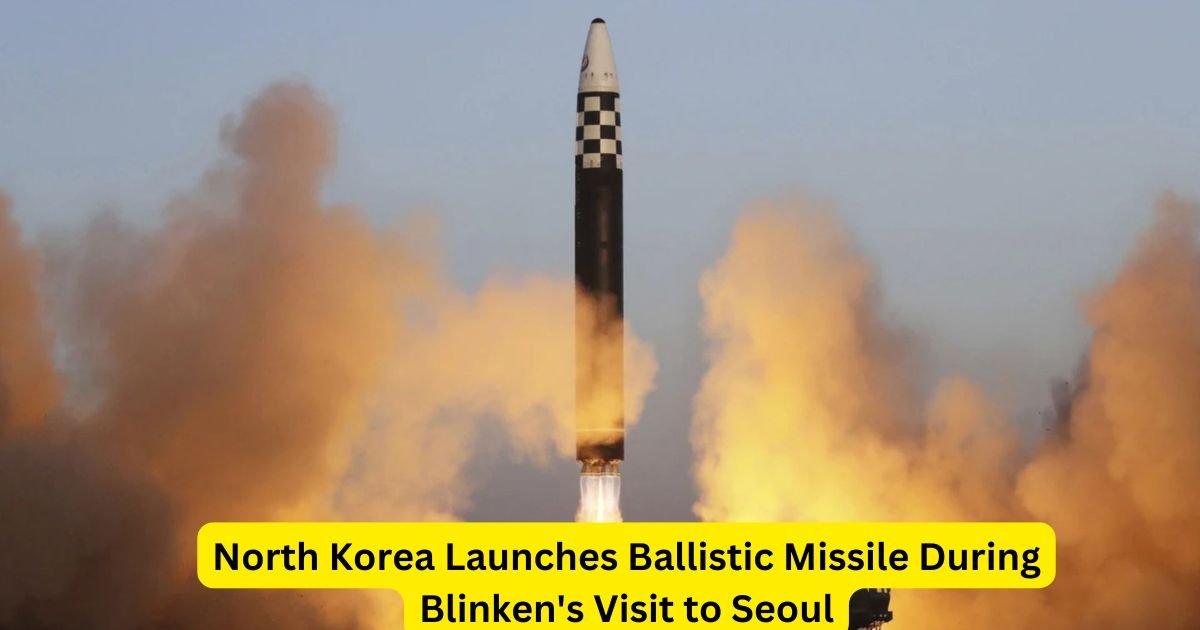North Korea has claimed the successful launch of a new intermediate-range ballistic missile equipped with a hypersonic warhead, asserting that it can “reliably deter any adversaries in the Pacific region.” The missile test, conducted on Monday, marks Pyongyang’s first launch in two months and coincided with U.S. Secretary of State Antony Blinken’s diplomatic visit to Seoul.
The North Korean government stated that the missile traveled approximately 1,500 kilometers at a speed 12 times faster than the speed of sound. However, South Korean military officials reported the missile covered about 1,100 kilometers before plunging into the sea, condemning the launch as a “clear act of provocation.”
Hypersonic missiles, which can travel at speeds exceeding five times the speed of sound, are particularly challenging to track and intercept due to their agility and rapid re-entry into the Earth’s atmosphere. North Korea claims that its new missile incorporates advanced flight control systems and a carbon fiber-based engine, making it more capable than previous models.
North Korean leader Kim Jong Un declared that the latest missile launch demonstrated the country’s readiness to protect its national interests by any means necessary. According to the state-run Korean Central News Agency (KCNA), Kim stated that the launch served as a warning to North Korea’s adversaries.
Ankit Panda, a nuclear weapons expert from the Carnegie Endowment for International Peace, noted that North Korea’s development of composite materials for missile construction is not surprising. He explained that such advancements aim to enhance the missile’s performance and improve the survivability of its warhead.
The international community remains concerned about the proliferation of hypersonic weaponry, as these missiles can perform evasive maneuvers and travel at unpredictable trajectories, making them difficult to counter. While some space-based detection systems can identify hypersonic threats, interception remains a complex challenge, especially during the missiles’ final approach.
During his visit to Seoul, Secretary Blinken emphasized the strong alliance between the United States and South Korea, calling it a “cornerstone of peace and stability on the Korean peninsula.” He also raised concerns about growing ties between North Korea and Russia, warning that Moscow may be sharing advanced satellite and space technology with Pyongyang.
South Korea’s military has heightened its surveillance and intelligence-sharing efforts with the United States and Japan in response to the launch. Officials pledged to remain vigilant against future provocations from the North.
The missile test comes amid a turbulent political period in South Korea, following the impeachment of President Yoon Suk Yeol. Yoon, who attempted to impose martial law in December, was stripped of his powers and now faces potential arrest. The South Korean constitutional court is deliberating on his removal from office, while acting President Choi Sang-mok has assumed leadership.
Pyongyang previously criticized Yoon’s martial law attempt, labeling it an “insane act” and accusing him of authoritarian tactics against his own citizens. In a statement, North Korean officials derided the move as “fascist dictatorship in action.”
North Korea’s missile launches have long been a point of international tension. The country last conducted a missile test in November, just before the U.S. presidential election, firing multiple short-range ballistic missiles off its east coast. That launch followed U.S.-led military drills involving South Korea and Japan, which drew sharp rebukes from Kim Jong Un’s sister, Kim Yo Jong.
As tensions in the region escalate, the global community continues to monitor North Korea’s military developments closely, raising concerns about the potential impact on regional and global security.
Read More News:
Justin Trudeau to Resign as Liberal Leader, Will Stay on as Prime Minister Until Successor is Chosen
